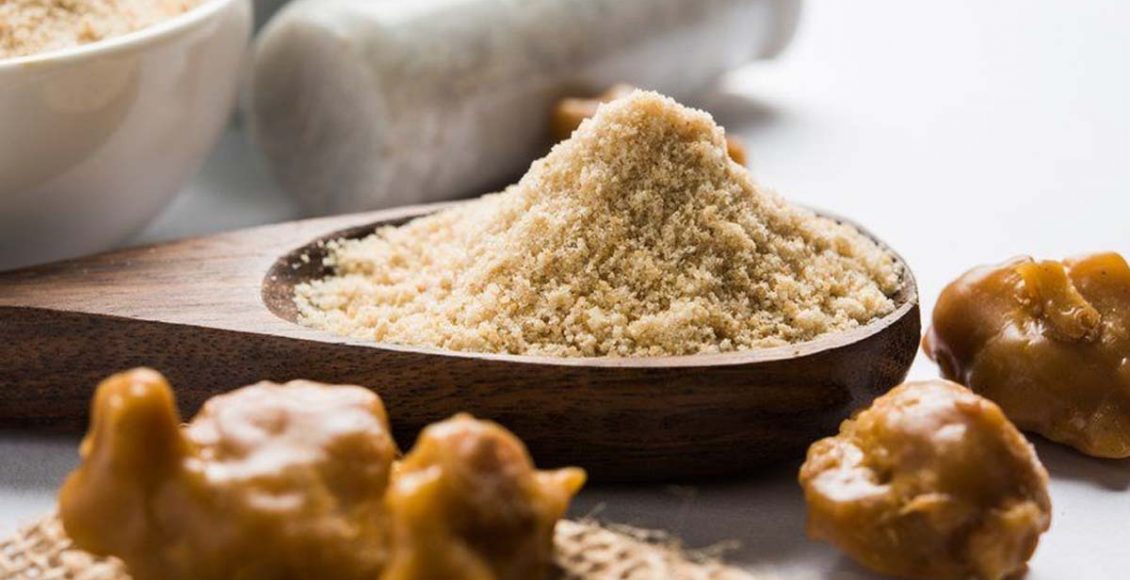
Asafoetida Cultivation in India – A promising business opportunity!
Asafoetida, also popularly known as heeng in North India, is powdered dried gum-resin which is extruded from the roots and rhizome of Ferula herb (Ferula assa-foetida L.). For decades, this pungent and strong spice, has been a part of Indian cuisine and has also been used for medicinal compositions. Asafoeida is abundantly loaded with a large assortment of nutritional elements including iron, fiber, potassium, calcium, and volatile essential oils. It has been popularly used as an anti-bacterial and an antiinflammatory agent for enhancing skin health, and for treatment of flatulence, respiratory problems, hypertension & menstrual cramps. There are around 130 species of Ferula found across the world, and two of these species also grow in India: Ferula jaeschkeana (grown in the Chamba), and Ferula narthex (grown in Kashmir and Ladakh), but only Ferula assa-foetida L. species yields asafoetida. Although asafoetida is a high value spice crop, cultivating Ferula assa-foetida L.in India is challenging as the plant needs stringent climatic conditions. The plant needs cold and dry conditions (between -40 C and 350C) with sandy soil, very little moisture and an annual rainfall of not more than 200mm. Under suitable climatic conditions, the plant grows up to 6 feet and it takes about 5 years to develop the fleshy roots from which raw asafoetida can be extracted in the form of oleo-gum resin. Extreme conditions and high moisture can lead the plant to become dormant. The plant can be under prolonged dormant stage leading to shortage of planting material for its cultivation.
Asafoetida is native to Afghanistan and historically, India has been one of the major importer of this raw spice from Afghanistan, Uzbekistan, United Arab Emirates, Tajikistan and Iran. India imports both, the white variety (water soluble) native to Afghanistan and the red variety (oil soluble) of asafoetida from countries such as Uzbekistan, Tajikistan and Iran. The white variety is quite popular and around 130.5 USD Million of asafoetida was imported to India during FY 2019-20 from Afghanistan which accounts for 98.2% of the total import of asafoetida. Asafoetida currently is imported in its raw form and processed in India to save costs. Few challenges like the political instability in Afghanistan, and air transportation costs have posed a challenge for Indian importers in importing raw asafoetida and resulted in fluctuating prices in the past.
To reduce the import debt and enable cultivation of this expensive crop in India, Council of Scientific and Industrial Research (CSIR) — Institute of Himalayan Bioresource Technology (IHBT) (Palampur, Himachal Pradesh) procured six accessions2 of asafoetida seeds in 2018 from Iran through ICAR-National Bureau of Plant Genetic Resources (ICAR-NBPGR). As the seeds remain dormant for prolonged periods as a part of adaptation technique to survive in desert conditions, germination was a challenge and only 1% of the seeds germinated. To tackle IHBT developed an agro technology which included special chemical treatment. 800 saplings of Ferula asafoetida were planted in the cold desert region of Lahaul and Spiti. Further cultivation will be done in a staggered manner.
The cultivation of asafoetida plant in cold desert areas like Ladakh and certain areas of Himachal, Uttarakhand and Arunachal Pradesh will be suitable for its growth and will in turn also change the economic condition of people in these regions. Each plant is estimated to yield about 500 gm of concentrated resin, which when processed can yield up to 250 kg of asafoetida powder. So, with an investment of INR 3 lakhs per hectare, the farmers have an opportunity to earn about INR 10 lakhs per hectare from the fifth year onwards3. Also, in the next 5 years, the government is targeting to cover a total of 750 acres of land under saffron and asafoetida crop cultivation in the Himachal Pradesh. The government support for the cultivation of asafoetida will surely ensure livelihood for the farmers in the cold desert regions of India and also enable reduction in the prices providing a good business opportunity!
Author

Connect with Author at: E-mail agribusiness@sathguru.com
 Grow Beyond
Grow Beyond 

